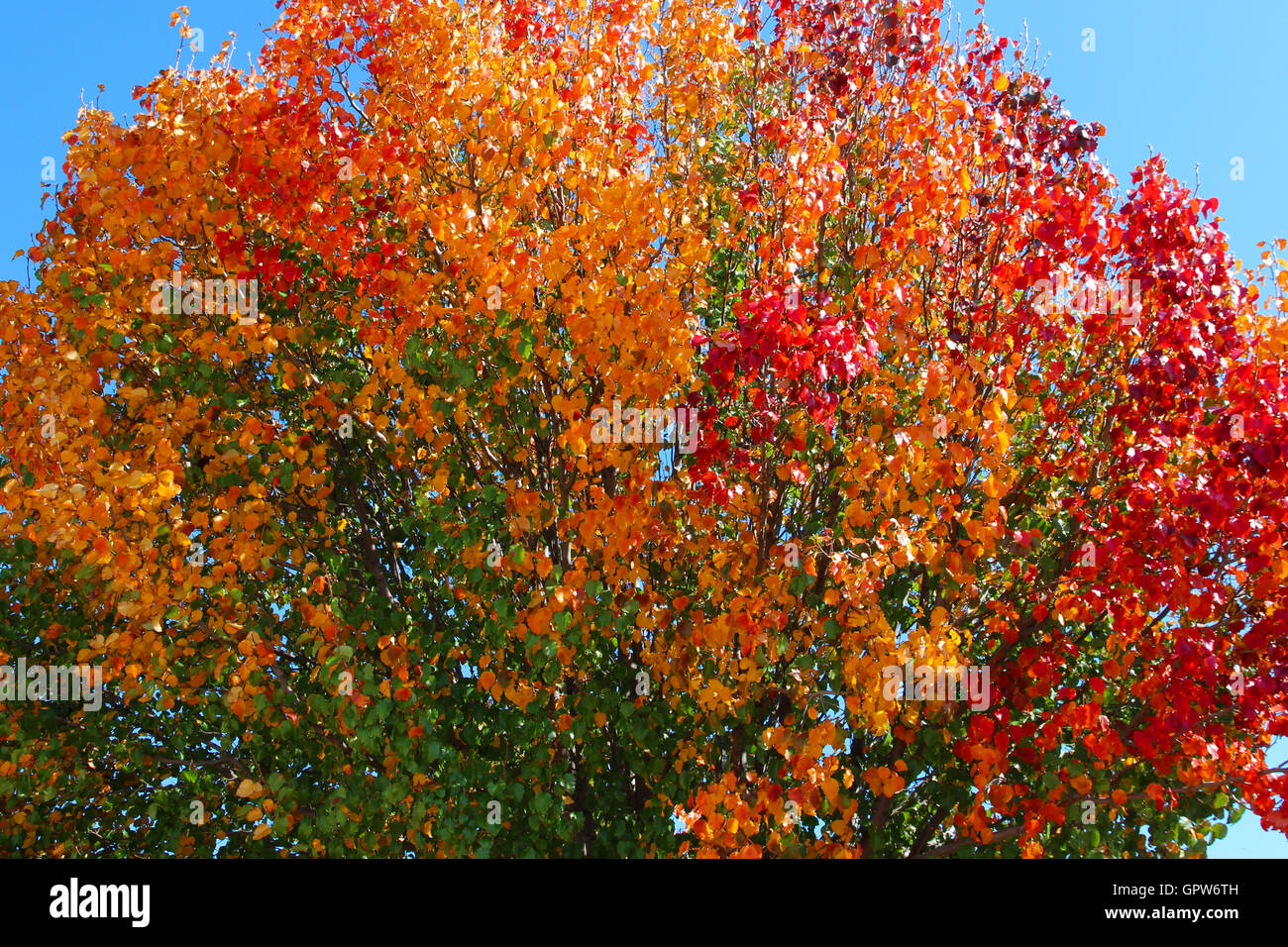Colorful trees with leaves of many shades make a landscape more interesting to look at. Instead of a typical green canopy, these beautiful trees show a range of colors that change with the seasons. Because of their bright colors, they are great for making gardens and other outdoor areas more interesting and beautiful.
Trees with variegated or colorful leaves come in many delightful forms Some have leaves that start out one color when they first emerge in spring, then gradually morph into other shades as they mature. Others keep their vibrant hues all season long When autumn arrives, many transform into blazing tones of red, orange, yellow, and purple before the leaves fall.
Deciduous trees offer a progression of changing colors throughout the year. Evergreen varieties provide year-round color as their leaves persist. There are small varieties perfect for containers on a patio, while larger growing types make bold focal points. With proper selection and care, they will enhance their surroundings with their spectacular foliage for many years to come.
Popular Choices for Multi-Colored Foliage
Some of the best options for multi-hued leaves include:
-
Japanese Maples: Elegant, cascading branches display leaves in shades of red, purple, orange, pink, and green. Hundreds of cultivars exist.
-
Tricolor Beech: Glossy leaves striped in pink, purple, and cream create a stunning effect. Trees keep their colorful leaves into winter.
-
Redbud: The heart-shaped leaves start out reddish-purple and turn green by summer. Yellow to red fall color follows.
-
Smoke Tree: Round leaves in rich reddish-purple hold their color all season on this small ornamental tree. Airy plumes bloom in summer.
-
Persian Parrotia: Foliage emerges reddish-purple in spring, matures to green in summer, and turns orange-red in fall on this low-maintenance specimen.
-
Katsura Tree: Leaves unfold reddish-purple, become blue-green in summer, then transform into rich yellows and oranges in autumn. Gracefully tiered branching.
-
Copper Beech: Lustrous purple-bronze leaves retain their bold color from spring to fall. New growth is an even deeper red.
-
Japanese Stewartia: Showy camellia-like flowers in summer, leaves with fall tones of orange and red, and exfoliating bark that reveals patches of orange, green, brown and cream.
-
Fringe Tree: Unique lacy white spring blooms, bright yellow fall color, and multi-season appeal on this large shrub or small specimen tree.
Designing With Multi-Colored Trees
When adding colorful trees to your yard, you should carefully think about how big they will get and how they will grow. Japanese maples, smoke trees, and fringe trees are all smaller varieties that grow to be 15 to 25 feet tall. They can be used in groups or as single plants. Larger varieties that grow to be at least 40 to 60 feet tall make great shade trees or background plants.
Situate colorful trees where their unique foliage will stand out. Use them as focal points, in mixed borders, or as specimens against plain backgrounds like walls or fences. Contrasting their multi-hued leaves with green conifers and shrubs creates added interest.
Give trees the right amount of sun to get the most color out of them. Too much shade will dilute their colors. They look their best when they have rich soil and are watered regularly when it’s dry. Cut back as needed to keep the structure looking good and encourage new, colorful growth.
Outstanding Examples for Smaller Spaces
Gardens of any size can incorporate the beauty of multi-colored trees. For smaller yards and patios, consider more compact varieties that thrive in containers like:
- Dwarf Japanese maples
- Tricolor Norway maple
- Purple smokebush
- Eastern redbud ‘Forest Pansy’
- Persian parrotia
Larger yards can highlight colorful focal point specimens like katsura trees, tricolor beeches, and copper beeches. Carefully placed groupings of three or more smaller specimens also create big visual impact.
With hundreds of varieties to choose from, trees with multi-hued leaves offer seemingly endless possibilities. They can transform ho-hum landscapes into vibrant, eye-catching outdoor spaces brimming with color. Be adventurous with your plant choices, and you’ll be rewarded with stunning foliage that keeps your garden looking sensational year after year.

Fall Color Trees Available at Nature Hills Nursery

Once the chill enters the night air, Tree leaves transform into an array of reds, oranges, purples, yellows, browns, bronzes, and mottled grays! While the green all summer is delightful, those autumn colors attract the eye and set the mood for the end of the growing season.
Add all of the muted colors to your landscape and the multitudes of shades of these fall-colored trees. These leaves could be referred to as eye candy! Nature Hills lets you choose the fall color of your tree selection process so you can create a varied color palette in your landscape!.
Free Shipping On All Orders $199+
- Featured
- Best selling
- Alphabetically, A-Z
- Alphabetically, Z-A
- Price, low to high
- Price, high to low
- Date, old to new
- Date, new to old
Compare
Top 5 Trees You Need for Fall Color | NatureHills.com
FAQ
What tree has multi-colored leaves?
The Eucalyptus deglupta tree is native to the Philippines, Indonesia, Timor Leste, and Papua New Guinea. It is also known as the Mindanao gum, the rainbow eucalyptus, and the rainbow gum.
What tree is known for its colorful leaves?
Acer saccharum (Sugar Maple) Acer saccharum, or Sugar Maple, is a long-lived deciduous tree known for its vibrant fall foliage and high-sugar sap used in maple syrup production.
What tree has 3 different leaves?
Sassafras trees are unusual among trees because they have three distinctive leaf shapes. The shapes in the picture on the right are 1) a simple leaf with no lobes, 2) an asymmetrical leaf that looks like a mitten, and 3) a leaf with three lobes.
